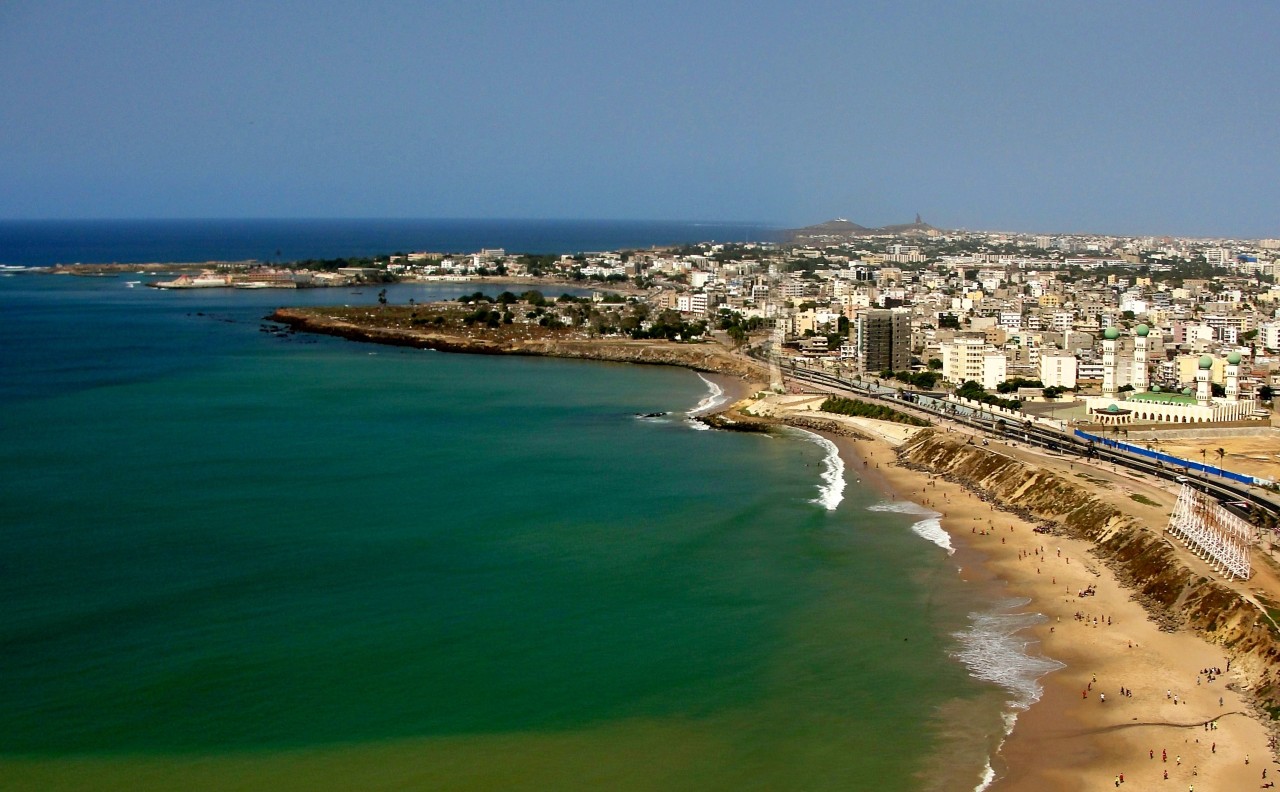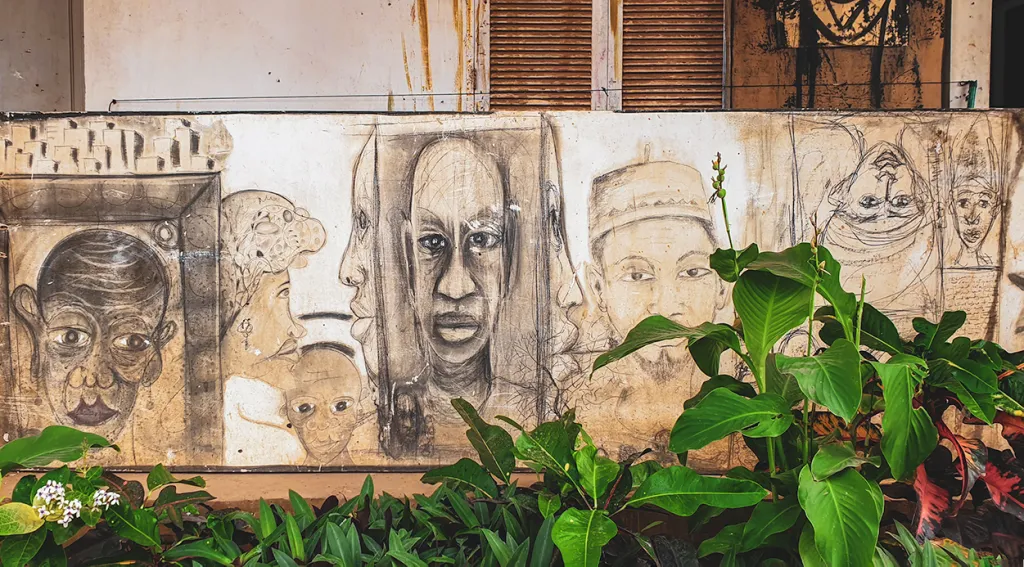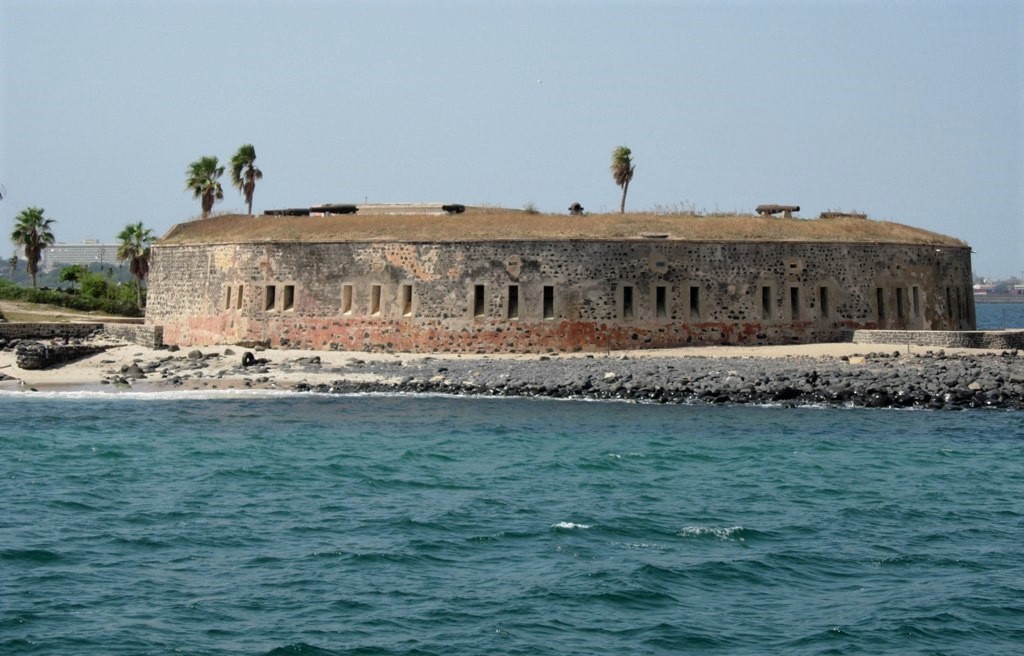Senegal’s seaside capital, Dakar, is located on the Cape Verde (Cap-Vert) Peninsula, Africa’s westernmost point and deserves several days of exploration. Having never been to Senegal (at least, not yet), I had to rely on the experiences of others and thanks to Google I found a couple of travel writers that had explored the capital city of Dakar and its surroundings.
With Berlin raised Sara Jabril, storyteller and Africa-focused content creator, I explore the Route de la Corniche, Les Mamelles Lighthouse and Lac Rose (the Pink Lake aka Lake Retba) through her ‘Senegal Travel Blog’.
Route de la Corniche
“The Route de la Corniche is more than just a road. To me, it’s the beating heart of Dakar, or perhaps better described as Dakar’s coronary artery that sustains and encapsulates the city’s unique spirit and vibrant energy. Dakar’s lifeblood”. – Sara Jabril
In Sara’s opinion, if you’re looking for the one place in Dakar that gives you a brief but accurate impression of the city, it would probably be to pick a spot along the Corniche, the road stretching along the coast offering expansive ocean views and spectacular sunsets ‘in the most beautiful shades of orange and purple’.
“On top of that” Sara says, “the Corniche offers something that I have found to be extremely rare and precious across the continent: public spaces”.
She suggest taking a late afternoon stroll along the road around the Sea Plaza area to where you’ll see a heaps of people: from ‘Nike-clad hijabi women out on a run, ripped wrestlers flexing their muscles during beachside practice, young football and basketball lovers playing on dedicated courts, budding photographers on the hunt for the best sunset shots and Senegalese of all ages making use of the public gym equipment’.
“Yes, the Corniche is basically a big outdoor gym and communal hangout space”. – Sara Jabril

Les Mamelles Lighthouse
The strategically important Les Mamelles Lighthouse is situated on the westernmost point of Africa, on the outskirts of Dakar. It was completed in 1864, it has been described as “one of the world’s great lighthouses, guiding ships around the western tip of Africa”. The completely white lighthouse consists of a 16 metres cylindrical tower attached to a two-storey building on the seaward side. The lighthouse is open to the public, with guided tours offered by the lighthouse keepers.
“When the Les Mamelles Lighthouse flashes every five seconds, ships know they have reached mainland Africa’s westernmost point. At over 150 years old, this important Dakar landmark is well worth the visit”. – Sara Jabril

Lac Rose – the Pink Lake / Lake Retba
Located about an hour’s drive away from Dakar, Lake Retba is a popular tourist attraction, and its impressive coral hue makes it a favourite for Instagram photos. Lac Rose is separated from the Atlantic Ocean only by a narrow corridor of dunes, and is so named for its pink waters, which are caused by the micro-algae Dunaliella salina algae. The algae produce a red pigment to help them absorb sunlight. The lake’s high salt content (up to 40% in some areas), which is mainly due to the entrance of seawater and its subsequent evaporation. This high salinity, like the Dead Sea, makes the lake sufficiently buoyant that people can easily float in its waters.
So, is it really pink? “Well, kinda” says Sara, “I visited the lake in September, just missing the reportedly best, or should I say peak pink period between November and June. Although not soaked in the intense flamingo pink shade that I had seen online, Lake Retba was definitely worth the trip. Learning about and meeting some of the workers who engage in salt harvesting was both interesting and eye-opening”.

Turkish travel and history enthusiast Argun Konak transports me to the African Renaissance Monument, the Villages Des Artes and Gorée Island, amongst other wonderful places in his post Dakar: 7 Day Travel Guide & Itinerary.
Monument de la Renaissance Africaine – African renaissance monument
The 49-meter-tall bronze African Renaissance Monument is located on top of one of the twin hills known as Collines des Mamelles, outside Dakar. The statue, designed by the Senegalese architect Pierre Goudiaby, overlooks the Atlantic Ocean in the suburb of Ouakam. The statue, depicting an African man holding his child on his shoulder with a woman embracing him, represents the achievements of African people and rise of the nation after independence.
A tour guide is available to show visitors the museum and exhibition areas in the upper levels, and to explain the history and the construction process of the monument. Climbing the hundreds of stairs up the statue to the observation point offers amazing views with Mamalles Lighthouse on one side and the western-most point of Africa on the other. Argun suggests one not miss the small museum inside the statue, or the exhibition rooms where one can see the artworks of some independent African artists.
In his opinion, the African Renaissance Monument is ‘perhaps the most iconic spot in Dakar’.

Villages Des Artes
“Hidden gem of Dakar! This place will marvel you with its uniqueness. Village of Arts is a small community built by Senegalese artists in Dakar. Upon reaching there I couldn’t believe my eyes due to the fact that these amazing geniuses actually established an art village in the middle of the bustling city. Each artist has his/her own small studio and some of them live there. I was welcomed very warmly, offered coffee many times and even invited to listen to some reggae music. Works that are created by these independent African artists are priceless. Especially the works crafted by Lassana Gassama blew my mind! Definitely visit his studio and take some of his works as souvenirs back home. I had unforgettable time chatting and exchanging words with the hospitable artists. This hidden gem is in a remote place in Dakar so it is not something you would easily notice. I luckily came across this unique place on Google Maps”. – Argun Konak

Île de Gorée – Gorée island
Gorée Island, off the coast is Dakar, was the largest centre of slave trade in Africa between the 15th and 19th centuries – thankfully, all that remains of that dreadful era are museums and memorials. This small car-free island, home to well-preserved colonial buildings from French era, narrow streets, small beaches, trees, and flowers, is a popular tourist attraction.
Important sights include House of Slaves which was the slave market of the island during the colonial era, Canon de Navaronnes is an old canon remaining from the French Colonial era, Memorial Goree-Almadies is a monument erected a couple of meters away from the Canon de Navaronnes which adheres the resistance of the African folk during the slavery era, the IFAN museum (not to be confused with IFAN Museum of African arts) is a remarkable museum inside the fortress of Gorée and the Statue of Liberation was given to Senegalese people to commemorate the abolition of slavery and to revere the victims of slave-trade, amongst others.

“Despite its sorrowful past, Gorée is the most popular touristic attraction in Dakar, and as the locals say: ‘It does not count if you do not visit Gorée”. – Argun Konak
Images – Jeff Attaway (Flickr & Wikimedia), Argun Konak (Lassana Gassama Village of Arts pic)

